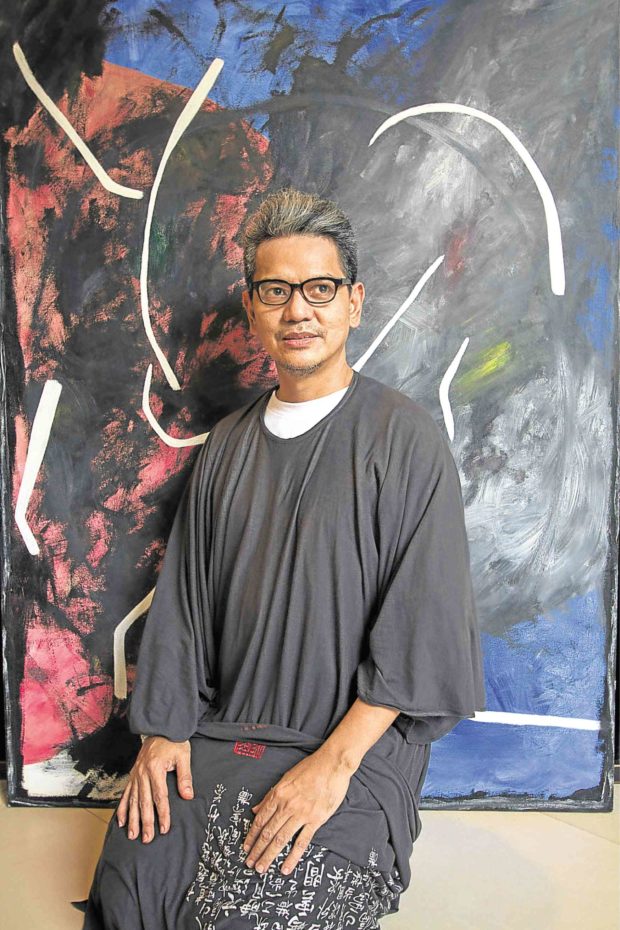
Cebu fashion designer and Buddhism convert Oj Hofer has a unique routine. After starting the day in silence, he continues his meditation with his calligraphy practice.
By 7 a.m., he is teaching the Oriental martial arts of tai chi and qi going, and reiki, a healing art of summoning the life force by the laying of hands. He is at the level where he can teach reiki.
After a breakfast of salad and fruits, he goes to his shop to make his patterns and meet clients.
On new moon and full moon nights, he posts his Ikebana arrangements on Facebook, hoping to inspire his friends.
Before bedtime, Hofer yet again practices calligraphy to quiet the mind. This lifestyle is reflected in the unconventional cuts and androgynous quality of the clothes he makes.
“I’m an oddball. Most people like decorations and glitter. For me, the woman is enough,” Hofer says.
He shares the same mindset as Japanese avant-garde designers Yohji Yamamoto and Rei Kawakubo, who are famous for their oversized silhouettes, asymmetry and restrained, dark palette.
Hofer says that the Filipino market prefers many colors and embellishments which can be loud and distracting at times. For him, color tends to draw attention from the fall and the movement of the fabric.
“I’m quieter,” Hofer says. His clothes attract individualists who don’t follow trends. The relaxed silhouette of his clothes augurs well for busy people, not social butterflies.
Hofer keeps the cut loose to highlight a woman’s aura. “The personality is enough, and the dress should come second. The wearer can shine on her own.”
New collection
His new collection pays homage to the kimono, the T-shaped, straight-line-cut Japanese robe with extended loose sleeves.
Hofer’s version features an asymmetric cut, in which one sleeve is shorter and loose while the other sleeve is longer and gathered on the wrist for body. The silhouette shrouds the body out of modesty.
“I make clothes where there is a lot of space between the body and the wearer,” he says.
His designs embody Japanese aesthetic principles such as the wabi-sabi, which imparts asymmetry and modesty; shibusa, which values subtlety; yugen, which espouses mystery and concealment; and enso, which signifies minimalism.
“In Japanese aesthetics, you see something beautiful from afar, yet you can’t point out where it’s coming from,” he explains.
The robes are discreetly adorned with silk-screened versions of Hofer’s calligraphy of Tang Dynasty poems by Li Bai and his personal seal. He notes that that the calligraphy practice girds him for his monthly exams, which are sent to Japan.
The cryptic poem on the kimonos echo the mysterious beauty of his clothes:
Moonlight reflects off the front of my bed. / Could it actually be the frost on the ground? / I look up to view the bright moon, /And look down to reminisce about my hometown. –CONTRIBUTED